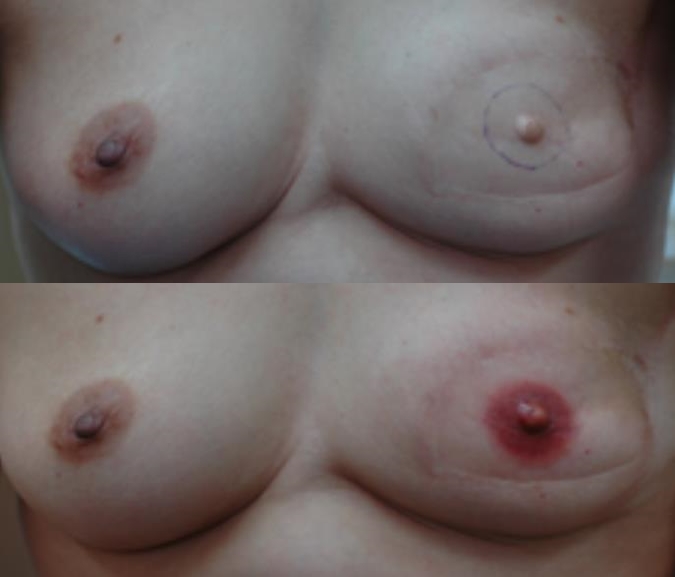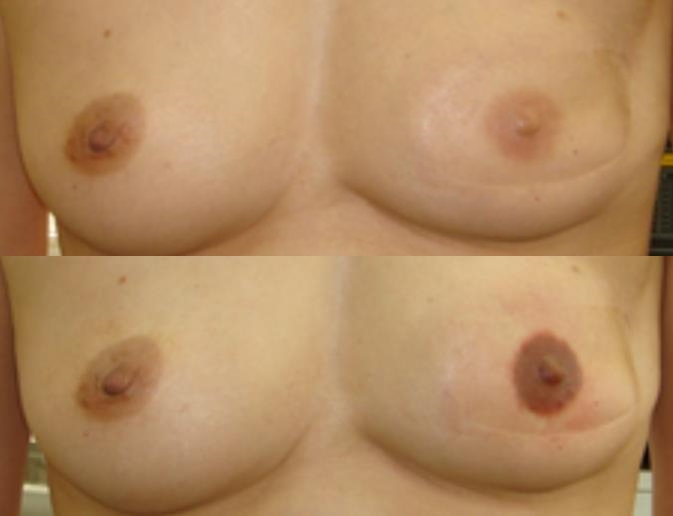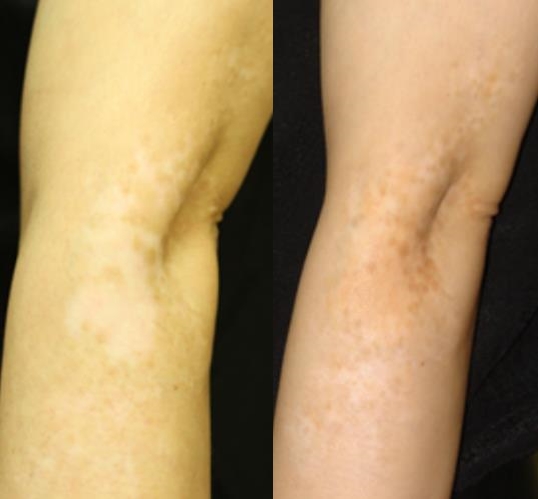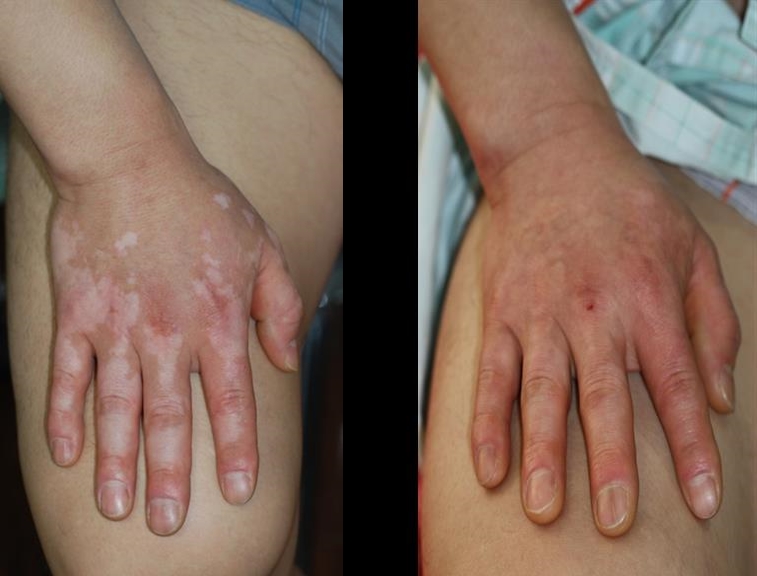
Medical tattoo is still a very small area of treatment but it is gradually growing. A good example of medical tattoo is the nipple-areola reconstruction after breast cancer mastectomy (Figures 1, 2). Tattoo reconstruction of the nipple and areola, which pose surgical difficulties, would provide an easier and safer method of treatment. In the US, tattoo reconstruction of nipple-areola is a recognized medical treatment that is covered by insurance. It is carried out by nurses who have patient referrals from their colleagues.

<Figure 1> Marking prior to left nipple-areola tattoo reconstruction, Before treatment.

<Figure 2> One month after left nipple-areola tattoo reconstruction, Immediately after second treatment.

<Figure 3> Vitiligo before treatment and 3 months after second treatment.

<Figure 4> Vitiligo before treatment, 3 months after tattoo treatment.
There is even an active academic society comprised of nurses who specialize in this reconstruction and there is a well-established collaborative network between nurses and doctors for patient referral. The financial burden on patients is low and about USD 1,000 of the cost is covered by health insurance. Medical tattoo can be applied to a wide range of treatments. It can be used in pigment conditions such as vitiligo and micropigmentation in areas of hair loss (Figures 3, 4).
More research and scientific data are needed for medical tattoo to be recognized as a medical area on its own. First, we need to focus on the safety of tattoo performed as a medical procedure. Accepting a procedure just because it has been in long use with relatively good safety would seem foolhardy in medical perspectives. The safety of tattoo ink should be verified by a recognized medical institution and supported by a large amount of clinical experience and data.
[Advertisement] FCR® (Fractional Prickle CoralCalcium Regentron) – Manufacturer: (www.illglobal.com)]
The FDA categorizes tattoo ink as a cosmetic product. This could be a challenge to the medical professionals who carry out tattoo procedures in Korea where tattooing is regulated as a medical procedure. In other words, the safety of ink products is unknown and this can be a serious problem. Tattoo ink should be regulated as medical products based on scientific data. Korea is in a favorable place to be the first in the world to establish global standards for medical tattoo. This can help us lead the world in this market. Korea also provides an ideal environment where doctors specializing in medical tattoo can safely study actual cases.
-To be continued




















